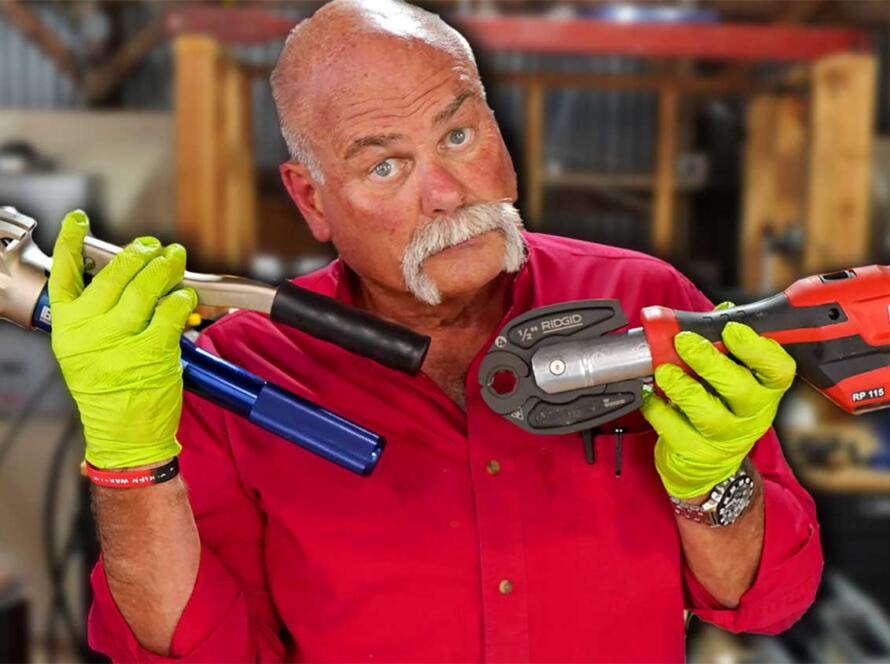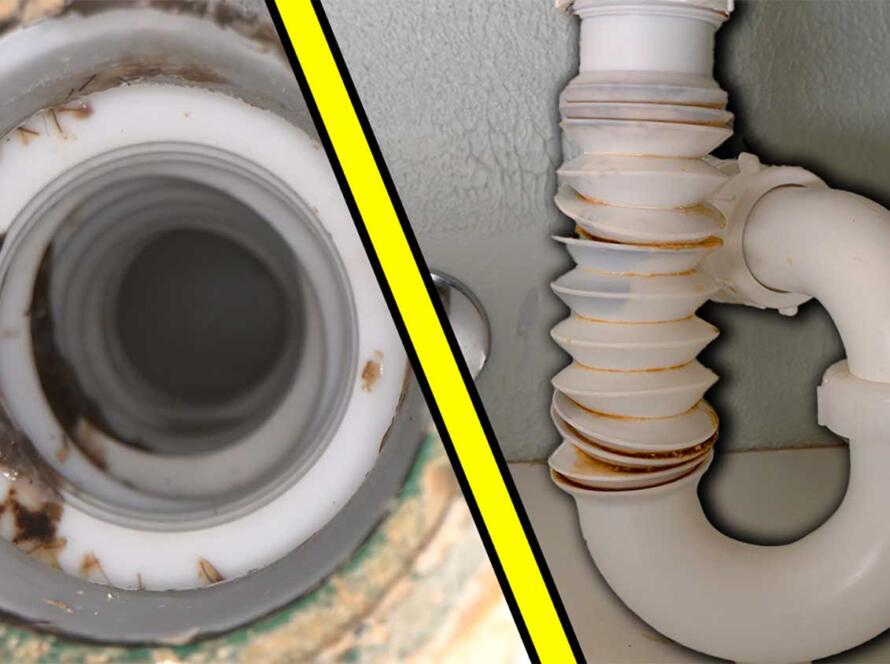Let’s dive into another real-world plumbing problem that gives you a glimpse into what it’s like to tackle a clogged drain and why, sometimes, a simple fix just won’t cut it.
So, we’ve got a kitchen drain in a rental property that’s backed up—big surprise, right? The previous homeowners didn’t seem too worried about it, and here we are dealing with it now. Instead of reaching for a cable snake right off the bat, I decided to give a different method a shot. I used a bladder. Sometimes it’s called a balloon, or a blow bag. Whatever you want to call it it’s a tool that uses water pressure to push clogs through the drain. You attach it to the hose, stick it in the clean-out, and let it work its magic by creating enough pressure to clear the line.
When I did this on my clogged drain, I could hear the water in the pipes, and the bladder was doing its thing, but nothing moved. That told me we had something more serious on our hands.
Next step? I pulled out a drain snake. This is a great tool used to break up smaller clogs—things like grease, food debris, that sort of stuff. The problem was, this snake was too small, and as I fed it in, I could feel it binding up in the drain. Not good. I could also see some mud on the snake when I pulled it back out, which was a big red flag. That means we’re likely dealing with a slab leak under the house, and at this point, it’s time to bring in the dig crew.
Now, this is where things get more involved. I marked out a three-foot-by-three-foot area where we’re going to cut into the ground and dig down. We’ll need to expose the pipes, see what’s going on under there, and reroute the drain line if necessary. And, of course, mosquitoes were all over the place because of the water pooling. It’s not just about the clog anymore; we’ve got to fix this the right way so it doesn’t keep happening.
Once we’ve got the area dug out, I start cutting into the existing pipes. It turns out they’ve used the wrong fittings, and there’s an issue with elevation, where one part of the line is six inches higher than another. That’s not good for proper drainage. I didn’t have a lot of room down under the slab, so I had to get creative about how I cut the pipes and installed new fittings. I didn’t have any room for hangers, so I used solid stainless steel shear bands for strength. These ensure that everything holds together and stays aligned. Check out the video if you want to see more about how I managed to get everything to fit together!
After we’ve put everything back together, it’s time for the big moment—testing the system. Once the glue is try, it’s time to turn on the shower and the kitchen sink, and watch for any leaks. Everything looks good! No water where it shouldn’t be, and we’ve got the plumbing back in working order.
Here’s the deal: sometimes a clog is more than just a clog. If you’re a homeowner dealing with a drain that won’t clear, it’s important to know when to call in a professional. This job went from a simple unclogging to having to dig under the slab to get to the leak, and without the right tools and knowledge, it could have been a disaster.




